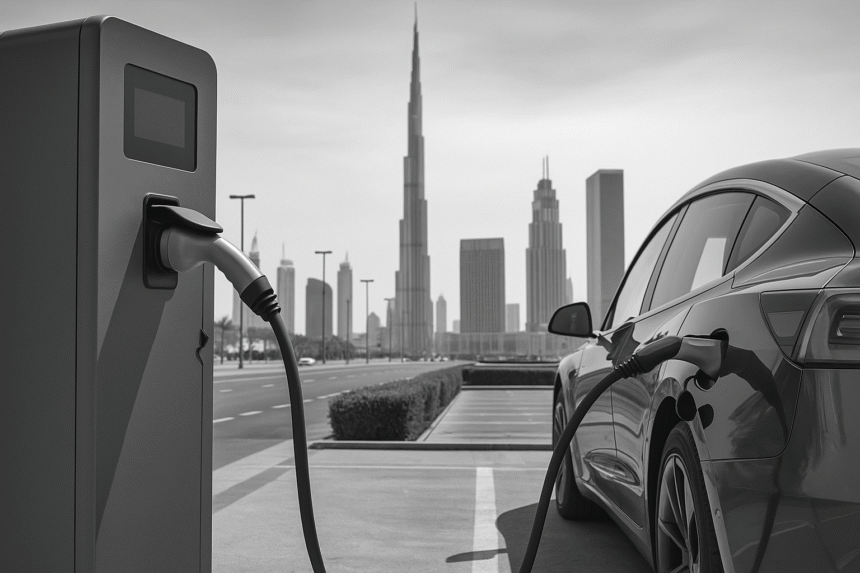How to Build an EV Charging Network in the UAE
The electric vehicle (EV) sector is accelerating fast in the UAE, driven by federal sustainability goals and growing consumer demand. But beyond government initiatives, the private sector plays a vital role—particularly in building EV charging networks across cities and highways.
If you’re exploring how to build an EV charging network in the UAE, this guide breaks down the essential steps—from licensing to location selection—designed specifically for CEOs, property developers, and clean-tech investors looking to enter this dynamic space.
1. Understand the Regulatory Environment
Before launching, companies must secure approvals from the key utility regulators in the UAE:
-
DEWA (Dubai Electricity and Water Authority) for projects in Dubai
-
ADDC (Abu Dhabi Distribution Company) for projects in Abu Dhabi
These authorities oversee grid connections, safety, and compliance.
Licensing Requirements:
-
Apply for a CPO license (Charge Point Operator)
-
Submit your charger models for technical approval (DEWA maintains an approved list)
-
Comply with cybersecurity and billing regulations if integrating payment systems
-
Integrate with Green Charger (DEWA) or EV Connect (ADDC) systems where applicable
Timelines for approval vary but typically range from four to eight weeks, depending on documentation and project scale.
2. Choose the Right Charging Technology
Your technology strategy should align with expected user behavior, location type, and budget.
AC Chargers (Level 2):
-
Suitable for malls, offices, residential buildings
-
Lower cost and easier to install
-
Charging time: 4–8 hours
DC Fast Chargers:
-
Ideal for highways, public stations, and logistics hubs
-
Higher power (50kW to 350kW+), faster charging (15–45 minutes)
-
Higher installation and grid upgrade costs
Most EV network builders opt for a hybrid approach—AC for daily use and DC for high-turnover locations.
3. Secure Prime Locations through Partnerships
Location is everything. Most successful EV charging operators form strategic partnerships with:
-
Real estate developers
-
Retail groups
-
Municipalities
-
Hospitality and logistics providers
This allows access to high-traffic or high-dwell-time locations without buying land. In many cases, these partnerships are built on revenue-sharing models, where the property owner earns a percentage of the charger revenue.
Due Diligence Before Signing:
-
Confirm utility capacity at the site
-
Check zoning compatibility
-
Assess lease/license duration and exit clauses
4. Develop a Scalable Operating Model
EV network businesses must plan for sustainability and scalability. This involves:
-
Selecting backend software for charger monitoring, billing, and customer support
-
Training in-house or contracting maintenance teams
-
Choosing payment options (RFID, mobile apps, contactless cards)
-
Creating SLAs for uptime guarantees (typically 98%+ availability)
Many firms also explore white-label SaaS platforms or partnerships with tech providers to reduce setup time.
5. Explore Government Incentives
The UAE has introduced several incentive structures to encourage EV infrastructure investment.
Examples include:
-
Exemptions from licensing fees for early-stage networks
-
Access to government-owned land for pilot projects
-
Corporate tax benefits for clean energy projects
-
Potential eligibility for PPP frameworks (especially for municipal tenders)
Staying aligned with national sustainability goals (e.g., Net Zero by 2050) can help businesses gain faster approval and better visibility.
6. Launch, Monitor, and Optimize
Once installed, real success lies in the operation and optimization of your network.
Key metrics to track:
-
Charger usage per day
-
Energy throughput (kWh/month)
-
Downtime vs. SLA
-
User satisfaction (via app feedback or surveys)
-
Revenue per charger by location
Based on this data, smart operators reallocate units, revise pricing, or bundle value-added services (e.g., valet charging, loyalty rewards).
Conclusion: A Strategic Time to Build
The UAE is laying the groundwork for a clean mobility future—and the time to build is now. As a business leader, you don’t need to reinvent the wheel. You need:
-
The right approvals
-
The right tech mix
-
The right partners
-
And a scalable plan
Those who act early will capture market share, benefit from regulatory goodwill, and become indispensable players in the UAE’s EV infrastructure story.



Leave a Reply